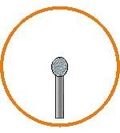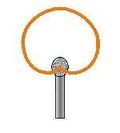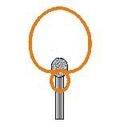4. Directional Characteristics
Not all microphones pick up sound in the same way - for instance some are designed to respond primarily to sound approaching from a single direction, while others pick up sound from both the front and rear, but not from the sides. These directional characteristics are known as a microphones polar or pickup pattern, and are an important consideration when choosing a mic for speech. When recording voice on location, you will generally not want to capture too much of the surrounding sound, but with a meeting between a number of people, you might want the mic to have as big a spread as possible to capture all of those present. Heres a look at the most common microphone patterns:
Omnidirectional

The response of a mic that has an omni pickup pattern remains more or less constant regardless of where the sound is coming from. These mics tend to be the most technically accurate and natural, but they may well also pick up sounds not intended for them. In the studio, they are often used as ambient mics, and they can be equally good for location recording when surrounding background ambience is required. Handheld omni mics are often used for location interviews, where they can be held halfway between interviewer and interviewee, picking up sound from both sides equally, without the need to continually move the mic back and forwards. They are particularly good in situations where there is little or no time to soundcheck.
Cardioid
The cardioid pickup pattern (sometimes also called unidirectional) is so-named because its range of capture looks a lot like a heart shape. Cardioid mics pick up sound to varying degrees in front of the diaphragm, while rejecting sound from behind it. This type of pattern is usually created by the use of ports behind the capsule. The ports are acoustic paths or labyrinths for sound to reach the back of the diaphragm and effectively get lost so that only the sound from directly in front of the diaphragm is captured. The pattern known as figure of eight is effectively two cardioid patterns back to back it is most commonly associated with ribbon mics and not often found in reporting situations.

Whilst cardioid is the most common of response patterns, it does suffer from the proximity effect this means that the closer you are to the mic, the greater its bass response. Although this effect is much loved by late-night DJs, its not great for clarity, and so you should generally avoid holding the mic too close when using a cardioid microphone for speech.
Super and Hyper-cardioid

Super-cardioids have a good response from the front, but less response than a regular cardioid to sounds arriving at the sides. Hyper-cardioids take this a stage further and have a much narrower field of forward response. These types are very useful if the mic has to be used at some distance from the sound source, and they also offer control over ambient sound due to their extreme rejection of sound from the sides - this is why theyre often chosen for use in particularly live atmospheres, such as sports events for instance.
Twoja osoba kontaktowa
Lista produktów
Oferty
-
Wysięgniki Mikrofonowe
-
Mikrofony do Kamer
-
Mikrofony Reporterskie






